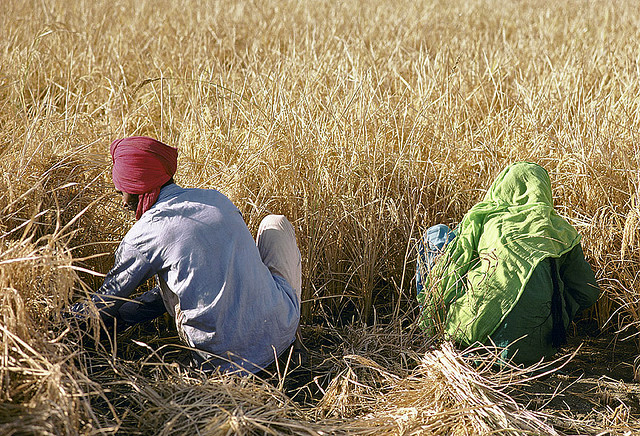Amartya Sen came from some not-so-humble beginnings. Born in to a well connected family and reportedly named by a Nobel Laureate in literature, Sen studied at Trinity College and received his first professorship at the tender age of 23. Expectations were high, and lucky for Sen, his career would live up to them, eventually winning him the Nobel Prize in economics in 1998 for his work in welfare economics and social choice theory. But Sen’s research has made another lasting impact, one that stemmed from a simple observation he published in 1962 in The Economic Weekly. Sen had noticed that larger farms in India produced less food per hectare.
It seems like a fairly simple and relatively banal observation, but it was one that had life or death implications. In 1962, the Green Revolution had yet to reach the Indian subcontinent, and the Bengali famine of 1943, which had a profound effect on Sen, had killed 3 million people. Food production per acre is key in crowded countries like India, and figuring out how to boost it can tip the balance from starvation to satiation.
The small farm advantage, Sen noted, was largely due to the extra attention each bit of earth received from its farmers. Large farms had to spread their effort over larger areas and often had to hire non-family help. Family members, as anyone who has helped move a relative knows, are cheap labor. Hiring outside the family is expensive, which leads to less labor per unit area compared to a farm that is worked exclusively by family members. Though Sen points out that these facts should surprise no one, it seems to have hit the economics literature like a bombshell.
Part of that was Sen’s near-perfect timing. His article landed just before the Green Revolution took root in India. In fact, less than 20 years after Sen’s paper in The Economic Weekly, another study reported the advantage had been erased, that large farms with better access to credit for expensive seeds, machinery, and chemical fertilizers and pesticides were outproducing small farms hectare for hectare. But his work inspired coming generations to consider the plights of small farmers.
Despite the production booms of the Green Revolution, Indian farmers are still primarily small land holders. In fact, in many countries the proportion of small farms is increasing. These aren’t quaint 10 hectare farms, either. Average farm sizes continue to hover around one hectare, and has even shrunk in some places. Average farm size in the U.S., by contrast, is around 170 hectares (418 acres). With such small plots of land, it’s difficult for farmers in India to make a living, let alone a profit. A bit of consolidation would go a long way towards propping up incomes without turning Indian agriculture into a clone of Western factory farms.
Since 1962, the Green Revolution has saved many people from starvation. But our grasp on high crop yields is as tenuous now as ever. Modern farming is dependent on mechanization and chemical fertilizers and pesticides, both of which wouldn’t be possible without fossil fuels. As fossil fuel prices rise, productivity may again rely more on human labor, and large farms may find themselves at a disadvantage once more. In the end, farm sizes likely need to meet somewhere in the middle. Exact acreage will depend on the crop and the region, but moderate sizes may prove to be both more profitable and sustainable.
Sources:
Eastwood, R., Lipton, M., & Newell, A. (2010). Farm Size Handbook of Agricultural Economics, 4, 3323-3397 DOI: 10.1016/S1574-0072(09)04065-1
Newell, A., Pandya, K., & Symons, J. (1997). Farm Size and the Intensity of Land Use In Gujarat Oxford Economic Papers, 49, 307-315
Sen, A. K. (1962). An Aspect of Indian Agriculture The Economic Weekly, 243-246
Photo from the World Bank Photo Collection.
Related post:
